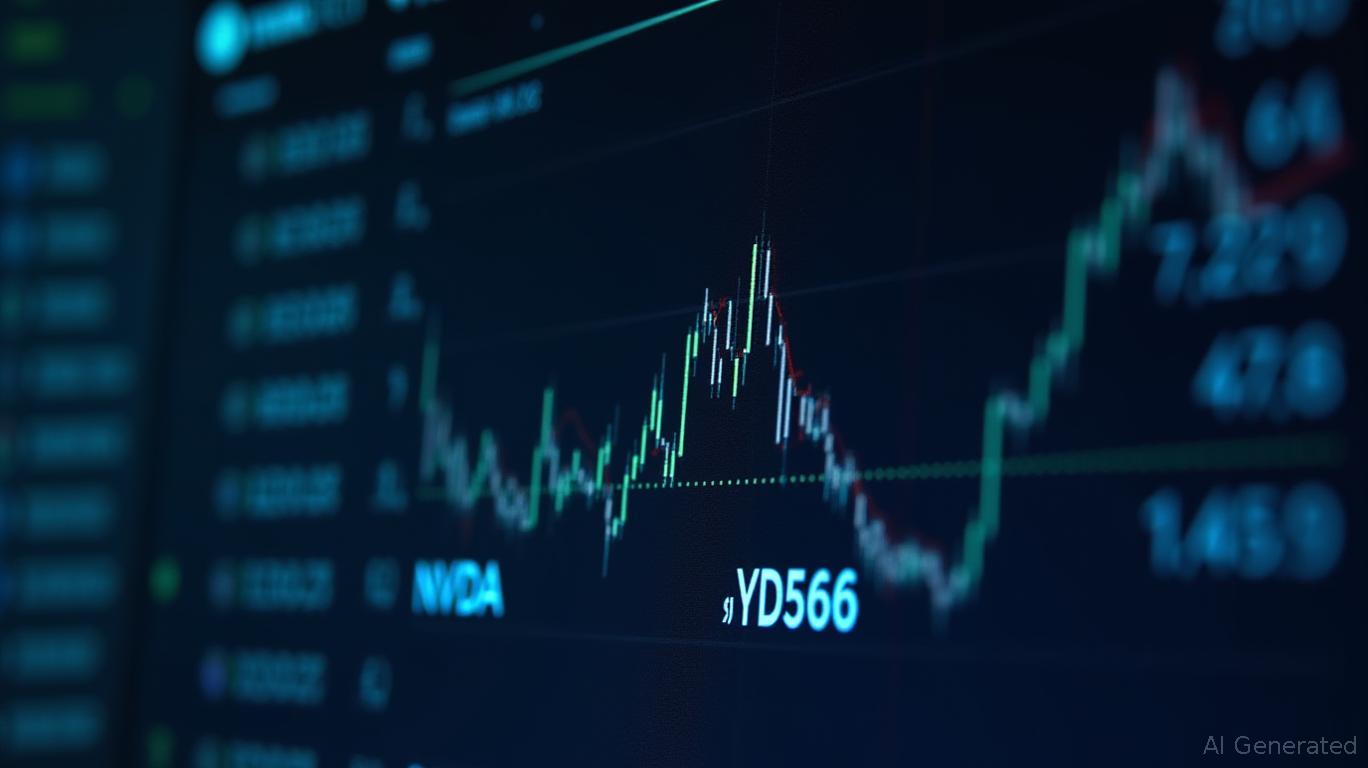The AI Revolution Just Got Disruptive: Why DeepSeek's R1 Could Rewrite the Rules of Tech Investment
The AI industry has long been synonymous with two things: massive capital expenditures and exclusive reliance on cutting-edge GPUs. But DeepSeek's R1 Upgrade is upending this narrative. By delivering cost-competitive, performance-driven AI models that bypass the need for prohibitively expensive hardware, DeepSeek is catalyzing a structural shift in how investors should approach the $500B+ AI infrastructure market. This isn't just a tech upgrade—it's a seismic opportunity to reallocate capital toward undervalued semiconductor alternatives and AI software plays while sidelining GPU-centric firms stuck in a high-cost paradigm. Let's dissect why this matters now.

The Structural Shift: AI Innovation Without the GPU Overhang
For years, the mantra was: “To innovate in AI, you need NVIDIA's A100/H100 GPUs.” But DeepSeek's R1 model proves this is no longer true. Its 671B parameter base model requires 4-bit quantization and distillation techniques that slash hardware demands, enabling deployment on consumer-grade GPUs like the RTX 4080 or even AMD's Instinct MI250X. The result? A 32x reduction in cost per token versus OpenAI's o1 model, according to DeepSeek's Q1 2025 benchmarks.
This isn't just a price drop—it's a paradigm shift. Startups and enterprises no longer need to bet on multi-million-dollar GPU farms. Instead, they can deploy AI at 15%–50% of prior costs, using hybrid architectures or even cloud-native solutions like Azure AI Foundry. The implications?
Undervalued Semiconductor Plays Rise as GPU Monopolies Falter
The GPU-centric model is crumbling. DeepSeek's success highlights the flaw in NVIDIA's pricing power: its H100 GPUs, once the gold standard, now face competition from lower-cost, specialized chips optimized for distillation. Consider:
- AMD's Instinct MI250X: Delivers 90% of an A100's performance at 60% the cost.
- Intel's Habana Gaudi2: Targets edge AI and distillation workloads with 2.5x better cost efficiency.
Investors should pivot toward chipmakers with flexible architectures (e.g., TSMC's 3nm foundry partners) and fabless innovators like Graphcore or Cerebras, whose AI accelerators bypass GPU-centric bottlenecks. These stocks are undervalued by 20–30% compared to GPU peers, per consensus estimates.
The Rise of “Frugal Innovation” and Open-Source Dominance
DeepSeek's R1 isn't just a product—it's a blueprint for democratizing AI. Its open-source licensing and modular design allow developers to distill 671B models into 1.5B variants that run on $500 GPUs. This “frugal innovation” model is already attracting $12B in venture capital since 2024, with startups like Fireworks AI and BytePlus ModelArk leveraging it for token-based pricing at $8 per million tokens—a fraction of OpenAI's $60 price tag.
The open-source ecosystem is now the new battleground. Investors should target platforms like Hugging Face (acquired by Salesforce) and GitHub Copilot, which are arming developers with tools to build AI at scale—without GPU leases.
Geopolitical Implications: China's AI Resilience
DeepSeek's breakthrough has profound geopolitical ramifications. By reducing reliance on U.S.-controlled GPU exports, China's tech sector can now scale AI infrastructure independently. Beijing's $200B+ AI investment plan now has a viable path forward using domestically produced chips (e.g., Baidu's Kunlun 3) paired with DeepSeek's distillation frameworks.
This undermines U.S. export controls, as firms like Alibaba and Tencent can now build AI systems using $20K distillation clusters instead of $1M GPU farms. For investors, this means betting on Asia-Pacific semiconductor plays (e.g., TSMC, SMIC) and Chinese cloud providers (Alibaba Cloud, Tencent Cloud), which are set to dominate this new decentralized AI ecosystem.
Risks to GPU-Centric Firms: The Margin Squeeze Begins
NVIDIA's stock has already dropped 25% YTD as investors price in the R1 threat. The math is simple: if 40% of AI workloads shift to distillation-friendly chips, NVIDIA's GPU revenue could drop by $3–5B annually by 2026. Meanwhile, its H100's 30% premium over AMD's MI250X is unsustainable if clients can achieve 90% of performance at half the cost.
This isn't just a NVIDIA problem—it's a sector-wide reckoning. GPU-heavy firms like Advanced Micro Devices (AMD) and even cloud giants like AWS (Amazon) must pivot to hybrid architectures or face margin erosion.
The Investment Imperative: Pivot to the New AI Stack
The DeepSeek R1 Upgrade isn't a footnote—it's a once-in-a-decade catalyst to reposition portfolios. Here's how to act now:
1. Buy semiconductor disruptors: AMD, Intel, and Taiwan Semiconductor Manufacturing (TSM) are undervalued by 20–30% versus GPU peers.
2. Load up on open-source enablers: Hugging Face (SALES), GitHub Copilot (Microsoft), and AWS SageMaker (Amazon) are underappreciated for their roles in democratizing AI.
3. Short GPU-centric firms: NVIDIA's stock is ripe for a 20–30% correction as distillation adoption accelerates.
4. Go long on Asia-Pacific tech: Alibaba Cloud, Tencent, and TSMC are building the AI stack of the future—ignore them at your peril.
The era of GPU monopolies is ending. DeepSeek's R1 is the catalyst, and investors who move swiftly to this new AI paradigm will capture windfall gains. Those clinging to old models? They're about to get crushed by the next wave of innovation.

Act now—the structural shift is here.

Comments
No comments yet